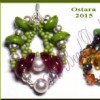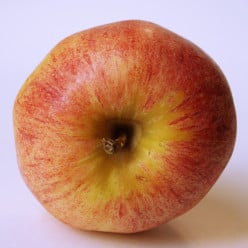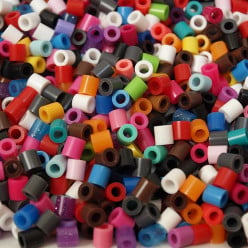Goal/Style Tips Box Could Use A Product Counter and Warning On Hubs
Face it, not everybody is good at math. I have done some checking on how many products in one hub simply too much when it comes to Google. What is interesting is that Amazon recommends, as do others, not to have more than 4-5 percent of you hub being products. In fact the recommend to be less than 4-5 percent of your content.
We get a message if Capsules appear too close together. It would be nice if there was something that would tell hubbers that they have too many products on their hubs, or give a percentage of products per hub. Our videos and photos are counted. Our words are counted except for those put in descriptions of product capsules, so why not have some sort of product count to let hubbers know they have too many products on their hubs?I really can't understand why hubbers would want to put a lot of products in one hub. If it's a sales/product hub then there should not be a problem so long as there are at least 50 words of description per product. Even so, adding a selection of products, the hubber's discretion should be used.
A normal article does not look good with more than two or so products which the hubber recommends. The hubber should think about regular ads and how cumbersome a page looks with a lot of Google ads. It's the same thing. These products are ads and adding too much will make the hub look cumbersome. One does not need a tool to tell you that your hubs won't look pleasing with too many products.I have some book-centred hubs (…okay, one, but i have more in-progress) where I use Amazon capsules to talk about the books as I would otherwise use a text capsule. They easily end up being at least half product capsules, and often close enough together to trigger a warning. I don't think they look horrible to the average reader – the 'buy now' button could stand to be a little more discreet, but otherwise they look like text/photo capsules about the book.
I don't think whatever system Google/HubPages uses to tell which hubs are overly promotional can really tell the difference between 'most convenient way to discuss a book' and 'hard sell', though
The last time I tried to put 2 Amazon capsules in an article I got a pop up telling me that only one Amazon and one E-Bay capsule were allowed.
I think HP has made it clear that less is preferable, the LC stating that 3 or more products may be too much. You don't have to be good at math and there is no need for an additional tool to warn that your hub looks spammy. I opened up one of the OP's hubs and counted 18 Amazon capsules. I would say that is pushing the limit for spam regardless of word content. I think even if writing a hub which includes a list of products/supplies, there doesn't need to be a capsule trying to sell each item. Describe the purpose of the item, add a video of an item being used, or find a nice photo for a few of the items. Give value to the reader.
"As long as the goal is to help the reader and not earn commissions, we are on the right side of good use." Paul E.I checked a hub that may have been referred to. For starters, the hub did have 18 products, but it also has a word count, in text boxes, of 2777 which is approximately 1 product per 150 words, whereas HP rules only requires 50 words per product.
Secondly, there isn't one or two paragraphs followed by a string of products which I see a lot of on HP.
According to my calcs I don't even have 1 percent of products in comparison to word count.
If a video replaced products, there would be approximately 18 videos, or 18 photos, or 18 of each.
HP recommends at least 1 video and 3 photos for Stellar hub. We have a counter for those, but anybody can count 1-3.
So, back to the subject. I did my calculation several times, several ways and came up with different answers. So yes, I think if the guide was able to tell us the percentage of products we have would be nice, even if the percentage is well below the word count requirement. After all, it is called a "guide."Linda, I think you missed my point. I'm trying to help. If you do a search for 'kitchen essentials', the top result is Real Simple. It gives a list of kitchen essentials. It doesn't try to sell, it simply informs and gives a checklist. The next few results are all cooking/kitchen related sites. They inform and have sections for each category of items. Again, these pages are not full of Buy Now images. I think we can learn by observing. I also didn't mean to replace each item with videos, simply that you could include one in lieu of another amazon capsule. I don't mean to single you out, but since you started the thread, I thought I would take a look at one of your hubs. Panda is trying to obliterate spammy content from the SERPS. What is our authority/expertise on the topic we're writing? What value do our hubs give that can't be found on numerous other niche related sites?
Food for thought, that is all. We don't need a guide or a tool.
rebekahELLE :
I hate videos and rarely use them. I hate going to articles full of videos and photos. Once I see that, I am gone.
I got my percentage information from Google.
For instance a 500 word hub, according to HP rules allows 10 products.
5 percent is around 25, so 3-4 percent is somewhere around 20 which is over what HP allows.
I doubt if I would even use 10 products for 500 hundred words.
However, when you get to 1000, 2000, or more words, trying to calculate a low percentage is difficult unless you are a math whiz! HP would allow 20 products for 1000 and 40 products for 2000 words.
I still believe if the guide showed percentage, it would be a good guide. Even if word count allowed 30 products according to HP rules, that could mean we have 10, 20, 30 percent of our hub being products which we don't want. Google recommends less than 4-5 percent.
After all is said and done, it is a judgement call.
Related Discussions
- 84
Amazon Associates Account being terminated for lack of sales.
by Mary McShane 8 years ago
I just got this email. Is terminating your account normal if you don't have any sales or referrals in 90 days????Hello,Thanks again for joining the Amazon Associates program. We’re reaching out to you because we have not seen sales activity on your account.At the time your application was...
- 22
Have a Not Featured – Quality hub and not sure why . . .
by Gemini Fox 9 years ago
Had never done a “sales” hub before so decided to try. Have tweaked and tweaked this hub but it still keeps on being not featured due to quality. Getting a little T’d . . . http://geminifox.hubpages.com/hub/Green … t-Friendly- Have every single one of the “goal” (attributes) boxes ticked off...
- 68
help, the amazon capsules show no products this morning!
by rebekahELLE 14 years ago
I have just checked my latest hub about love quotes ... and I had 2 amazon capsules with products. now they are not showing, saying there are no amazon results.I don't have time to fill them back up now, has anyone had this happen before?
- 26
Confused. Can List Based Articles Have Multiple Amazon Capsules/Links?
by Rosheda Stephenson 6 years ago
I am yet to successfully publish any articles with amazon products. I am trying to be clear on the requirements for these articles. I thought articles should be limited to 1-2 products, however I have seen list based articles with multiple products (ideas for gifts) on niche site, Holidappy. Would...
- 23
Multiple Products In a Capsule to Be Discontinued
by Christy Kirwan 6 years ago
Today I have a quick announcement. We are retiring Amazon Capsules with multiple products. Writers haven’t been able to create these in a very long time, but some very old articles still contain Amazon Capsules with multiple products in them. On January 8th, these will be converted to...
- 28
Better to Put Amazon Capsules at the end, or within hub?
by Sharilee Swaity 12 years ago
I have a question for those of you who use Amazon in your hubs. Let's say that you are writing a hub with a list of different products. Do you think it's better to put all the amazon stuff at the bottom of the hub, all in one place, or to spread the ads throughout the hub, with one ad per product?...












